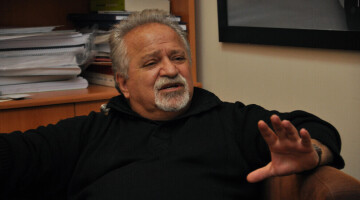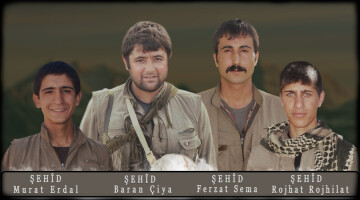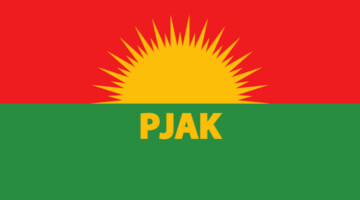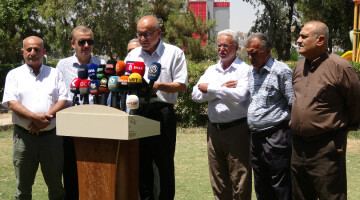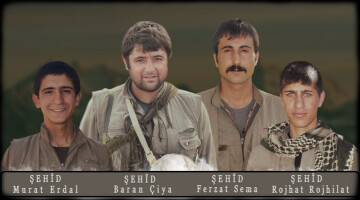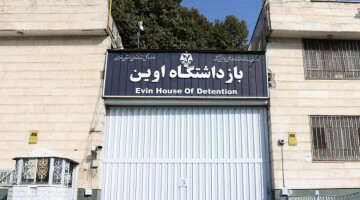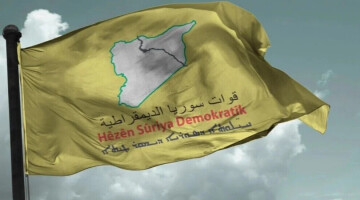وێنا فەرهەنگییەکێ هۆرامانی
مەحاڵە دورەدەس و سەختەکێ هۆرامانی ماوا و شاهێدیدەرو فەرهەنگو خەڵکو هۆرامانییەنێ.
هۆرامییەکێ پێسە یۆ جە خێڵەکاو کوردی وەڵێ ٣٠٠٠ ساڵێ وەرتەر جە بیەی عیسای (زیاتەر جە ٥ هەزار ساڵێ) چا مەحاڵەنە مژیوا، کارو باخداری و هیتیاری و گەلەداری کەرانێ.
دلێ دڵو کوەکا زاگرۆسییەنە، ئوستانەکا سنەو کرماشانییەنە سەرو مەرزەکا وەرنیشتو ئێرانیۆ مژیوا، دوێ بەشینێ، دلێڕاسەو وەرکۆتۆ ژاوەرۆ و تەختا ( ئوستانو سنەیەنە)، وەرنیشتیچۆ ”لهۆن“ـا جە ( ئوستانو کرماشانی).
وێناو ژیوای خەڵکو هۆرامانی بە شێوێوا کە وێشا چنی سەختی مەحاڵەکەی ساچنان، درۆسکەردەی یانا جە یاگە لێژەکانە، نیای دار و درەختی دلێ تەوەناو یاگە سەختەکانە، گەلەداری و کۆچی کەم وەختەشا پێ هەوارەکا، دیارتەرین جیاکاریێ ژیوای و فەرهەنگو هۆرامییەکانێ کە ساڵانێوا بەپاو فەسڵەکا بەرز و نزمییەکانە ژیوای کەرا( زمسانەنە دەگاکانەو هامنەنە هەوار و دلێ مڵکەکانە)
هەمیشە مەحاڵەکەشانە مەنێنێ و ژیوایشا کەردەن، کۆمایێ چێوی تایبەت بەوێشا هەن کە جیاشا کەرۆوە و پنەش مژناسیاوە، ئی ئەوەمەنەێچە هۆرکڵاشیای سەرو تەوەنەکا، مەڕەکێ، کەنارگا و کەشەکێ، یاگە وەختی و هەمیشەییەکاشا پەی نیشتەجا بیەی، یاگەکار ، قەبرسانەکێ ، ڕاکێ ک، دەگا و قەڵا و فرە چێوێ تەرێ نەخشیێ کە بەرکۆتێنێ.
ئا ١٢ دەگا کە ئینێ پڕۆژەکەنە، سەلەمنەرێ ئانەیەنێ کە خەڵکو هۆرامانی سەربارو نەبیەی بومێ پیتێنێ پەی هیتیاری دلێ کوەکانە، تاوانشا جوابو سروشتی بڎاوە و وێشا ساچنا چن دۆروبەریشا ..
٭٭هۆرگێڵنایش جە ئینگلیزی پەی هۆرامی/ نامق هۆرامی
٭٭یاگۍ یادئاوەریەن، وێرەگاو ٣ شەممەی، جە وڵاتو (چین)ی ڕکوزیاو پەروەردە، زانست و فەرهەنگو سەر بە نەتەوەیۆگێرتەکان کە بە یونسکۆ ئەژناسیان، ٤٤ چوارەمین کۆنیشتش ئەنجامدا و جە میانشەنە سەرو دۆسیەو تۆمارکەردەی هەورامانی چوون میراتیوی جیهانی مرۆڤایەتیی قسێ و باسێ وگفتوگۆی فراوان کریا.
هەرپاسە هەورامییەکی چەمەڕێ بێنێ، یونسکۆ دۆسیەکەش پەسەند کەرد و هەورامانش پێسەو میراتیوی جیهانی مرۆڤایەتیی تۆمار کەرد.
دەقە ئینگلیزیەکە:
**Cultural Landscape of Hawraman/Uramanat
The remote and mountainous landscape of Hawraman/Uramanat bears testimony to the traditional culture of the Hawrami people, an agropastoral Kurdish tribe that has inhabited the region since about 3000 BCE. The property, at the heart of the Zagros Mountains in the provinces of Kurdistan and Kermanshah along the western border of Iran, encompasses two components: the Central-Eastern Valley (Zhaverud and Takht, in Kurdistan Province); and the Western Valley (Lahun, in Kermanshah Province). The mode of human habitation in these two valleys has been adapted over millennia to the rough mountainous environment. Tiered steep-slope planning and architecture, gardening on dry-stone terraces, livestock breeding, and seasonal vertical migration are among the distinctive features of the local culture and life of the semi-nomadic Hawrami people who dwell in lowlands and highlands during different seasons of each year. Their uninterrupted presence in the landscape, which is also characterized by exceptional biodiversity and endemism, is evidenced by stone tools, caves and rock shelters, mounds, remnants of permanent and temporary settlement sites, and workshops, cemeteries, roads, villages, castles, and more. The 12 villages included in the property illustrate the Hawrami people’s evolving responses to the scarcity of productive land in their mountainous environment through the millennia.




